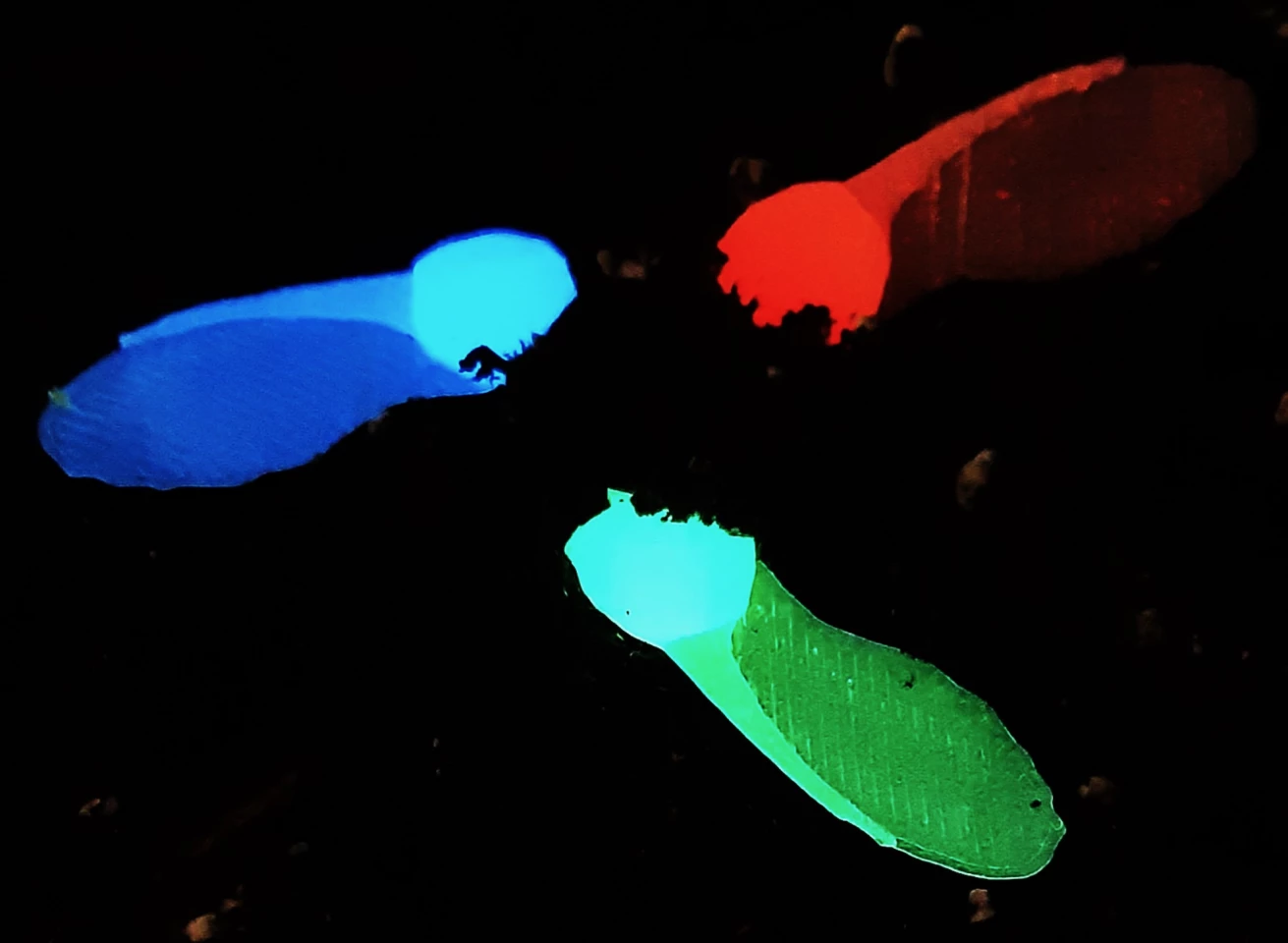Trees such as maples have "fruits" known as samaras, which consist of a seed joined to a papery wing. Scientists have now created artificial samaras, which could be used to quickly and easily monitor soil temperature from the air.
Developed by researchers at the Italian Institute of Technology (IIT) and Germany's Leibniz Institute for New Materials, the device is called the Acer i-Seed in reference to its inspiration, the seed of the Acer campestre (field maple) tree. It's 3D-printed out of plant-based, biodegradable PLA (polylactic acid) polymer, which has been mixed with tiny non-toxic particles of metals known as lanthanides.
When a batch of the Acer i-Seeds are dropped from a drone hovering over a field, their bio-inspired shape causes them to spin through the air as they fall instead of just plummeting straight down, ensuring that they're widely dispersed across the ground.
After having landed, they're subsequently imaged by a drone – perhaps the same one that deployed them – which is equipped with a fLiDAR (fluorescence Light Detection and Ranging) system. When the lanthanide particles in the i-Seeds are exposed to near-infrared light emitted by the fLiDAR, they respond by fluorescing.
The exact manner in which they fluoresce, such as their color and intensity, is determined by the temperature of the soil on which they're lying. This means they could be "read" by drones flying overhead, and would harmlessly biodegrade over time.

The scientists are now looking into methods of having the Acer i-Seeds relay other environmental data such as humidity, CO2 and pollutant levels.
"This study demonstrates that imitating the strategies or structures of living beings and replicating them in robotic technologies are key elements to obtain innovation with low environmental impact in terms of energy and pollution," said the lead scientist, IIT's Barbara Mazzolai.
A paper on the research was recently published in the journal Science Advances.
Source: Istituto Italiano di Tecnologia (Italian Institute of Technology)





